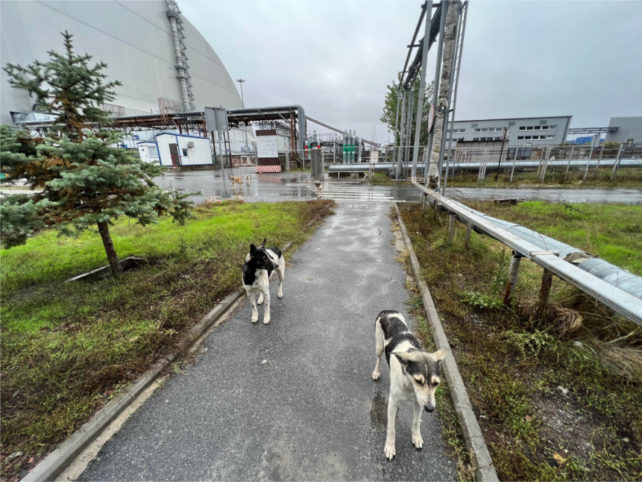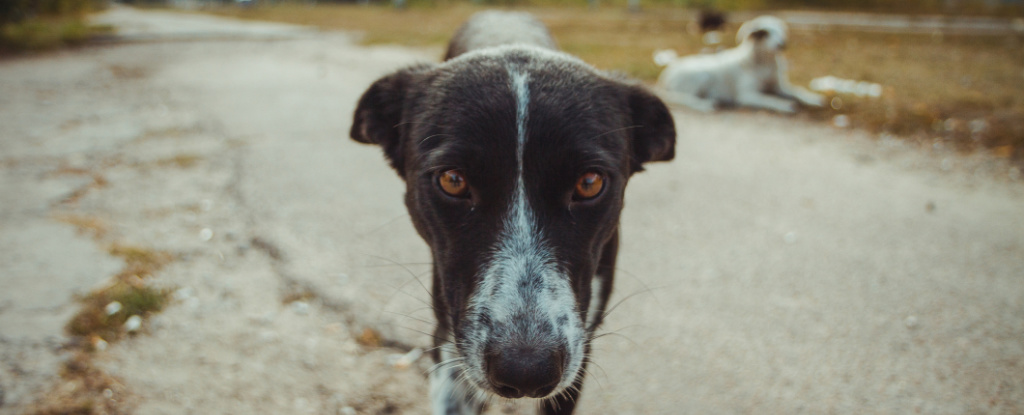Products You May Like
Nearly 40 years ago, the world’s worst nuclear disaster turned the Ukrainian city of Pripyat and its nearby power plant, Chernobyl, into a radioactive hot zone – and surprisingly, decades later, a haven for wildlife.
Wolves, wild horses, birds, bison, elk, frogs, and dogs roam among the decaying concrete buildings and surrounding forests of what is now essentially one of Europe’s largest nature reserves. Where humans fled, plants grew.
A new genetic analysis conducted by an international team of researchers on the region’s canine clans could provide a foundation for learning just how the contamination dusting the landscape may have affected their DNA through the generations.
Scientists have long wondered what effects decades of exposure to low-dose radiation may have had on the area’s wildlife.
Some studies have pointed to sharp declines in bird populations, and an increase in genetic mutations among certain species at sites with higher radiation levels. But other investigations have found little evidence of such radiation effects.
One unresolved question contributing to the confusion is whether animals are absorbing small amounts of lingering radiation at levels that are barely harmful or inheriting observed differences from earlier generations who experienced the blast. Or both.
Considering the fact that animals have probably moved into and out of the contaminated zone over the years, it’s clearly a messy natural experiment – but one that could still be hugely useful for improving our understanding of the effects radiation has on biology.
By characterizing distinct populations of dogs that live in and around Chernobyl, this latest genetics study provides a better basis for comparing changes in the species.
Some of these dogs may be descendants of pets left behind by evacuees, but it’s unclear how many populations remain or how diverse these populations are, and if they differ from other feral dogs throughout Ukraine and adjacent countries.
“Before the effects of radiation on the whole genomes of this population can be isolated from other influencing factors, the demography and history of the population itself need to be understood,” write University of South Carolina biologist Timothy Mousseau and colleagues in their published paper.
Large mammals such as dogs and horses are of particular interest because the effects on their health could enlighten us as to what might happen when humans eventually return.
Radiation continues to emanate from the area now known as the Chernobyl Exclusion Zone, which extends some 2,600 square kilometers (about 1,000 square miles) around the ruinous power plant.
Despite the radioactivity, feral dog numbers have been rising, prompting the formation of Chernobyl Dog Research Initiative (CDRI), which has provided veterinary care for these dogs since 2017.

More than 800 dogs are estimated to be living in and around Chernobyl, often fed by power plant workers who return to maintain the facility. They exist in three distinct populations, though this new analysis revealed a surprising amount of genetic overlap and kinship ties between them.
One population lives in the power plant itself; the second occupies Chernobyl city, an abandoned residential area some 15 kilometers from the plant; and the third lives 45 kilometers (28 miles) away in Slavutych, a city with relatively less contamination where some power plant workers still reside.
Over two years, CDRI veterinarians collected blood samples from 302 stray dogs across the three populations, which University of South Carolina PhD student Gabriella Spatola then analyzed.
Spatola, Mousseau, and colleagues identified three main family groups amongst the Chernobyl dogs, with the largest one spanning all three geographical areas where the samples were collected.
Based on their genetic kinship, it appears these dogs move between sites, live close to one another, and breed freely.
The history of mixing between the three Chernobyl populations evident in their genomes indicates “that dogs have existed in the Chernobyl region for a long period of time, potentially since the disaster, or even earlier,” Mousseau and colleagues write.
Comparative analyses showed the Chernobyl dogs are also genetically distinct from free-breeding dogs in Eastern Europe, Asia, and the Middle East.
There have, however, been some influxes of genetic material from modern dogs such as mastiffs into some Chernobyl populations. This may be because residents and their pets have begun moving back into Chernobyl City, the researchers suspect.
What will be interesting for future studies is that the three Chernobyl dog populations have been exposed to varying levels of radiation.
The next step, the researchers say, will be designing broader studies “aimed at finding critical genetic variants that have accumulated for more than 30 years in this hostile, contaminated environment.”
If the studies conducted so far on the wildlife of Chernobyl are anything to go by – and based on what we know about how environmental exposures can be inherited as molecular etchings on an organism’s genome – scientists will be hard-pressed to tease out clear findings that resolve their debates once and for all.
The research has been published in Science Advances.
